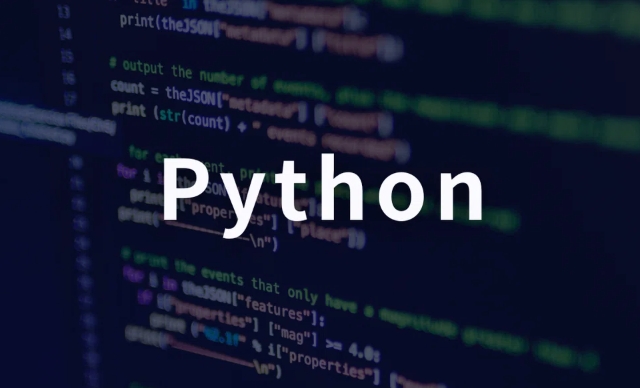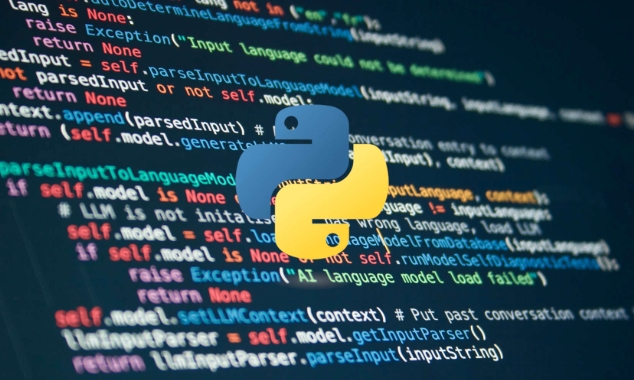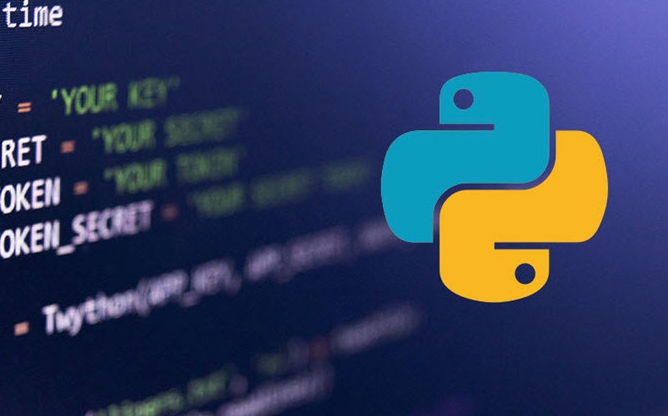The key to connecting to a MySQL database in Python is to select the right library and configure it correctly. 1. Install the driver: Use pip to install mysql-connector-python or pymysql; 2. Create a connection: Create a connection by specifying host, user, password and database parameters; 3. Execute a query: Create a cursor object, call the execute() method to execute SQL statements, and use fetchall() to get the results; 4. Submit a transaction or close the connection: For the modification operation, the transaction needs to be submitted, and finally the cursor and database connection are closed; 5. When using PyMySQL, the import module and connection methods are slightly different, and more customization options are supported. Common problems are mostly caused by network or permission configuration and need to be checked one by one.

Connecting to MySQL database is actually not difficult in Python, mainly using tools and writing and configuration. The most commonly used method is to implement it through the two libraries mysql-connector-python or PyMySQL . Below I will explain how to operate it in several steps, including installation, connection and simple query.

Install MySQL driver
Python itself does not have built-in MySQL support, so the first step is to install a driver package first. There are two more common options:
-
mysql-connector-python(official recommendation) -
pymysql(lighter, community-maintained)
You can use pip to install one of them, for example:

pip install mysql-connector-python # or pip install pymysql
If you are not sure which one to choose, you can give mysql-connector-python priority, it has complete functions and complete documentation.
Establish a database connection
After installing the driver, you can start writing code to connect to the database. Taking mysql-connector-python as an example, the basic connection method is as follows:

import mysql.connector
conn = mysql.connector.connect(
host='localhost',
user='your_username',
password='your_password',
database='your_database'
) Note that these four parameters are necessary: host address, user name, password, and database name. If the database is not local, you need to change host to the IP address or domain name of the remote server.
Sometimes you can't connect, which may be a firewall or permissions problem. Remember to confirm whether the database allows remote access and whether the user has corresponding permissions.
Execute queries and get results
After the connection is successful, the next step is to execute the SQL query. You need to create a cursor object and then call its execute() method:
cursor = conn.cursor()
cursor.execute("SELECT * FROM users LIMIT 5")
for row in cursor.fetchall():
print(row) This way, the first five records can be printed out. Note that after each SQL is executed, if it is a query statement, use fetchall() or fetchone() to get the data. If it is an insertion, update and other operations, you need to call conn.commit() to submit the transaction.
Don't forget to turn off the cursor and connection at the end:
cursor.close() conn.close()
The difference between using PyMySQL
If you are using PyMySQL , the code structure is similar, except that the import module and connection methods are slightly different:
import pymysql
conn = pymysql.connect(
host='localhost',
user='your_username',
password='your_password',
database='your_database',
charset='utf8mb4',
cursorclass=pymysql.cursors.DictCursor # optional, return the result in dictionary format)It supports more customization options such as setting character sets and returning formats. Overall, the logic of the use of the two is consistent, but there are some differences in details.
Basically that's it. As long as the driver is installed and the parameters are installed, it will not be difficult to connect to the database. When encountering problems in the middle, most of them are because the network or permission configuration is incorrect, so you can check it step by step.
The above is the detailed content of How to connect to a MySQL database in Python. For more information, please follow other related articles on the PHP Chinese website!

Hot AI Tools

Undress AI Tool
Undress images for free

Undresser.AI Undress
AI-powered app for creating realistic nude photos

AI Clothes Remover
Online AI tool for removing clothes from photos.

Clothoff.io
AI clothes remover

Video Face Swap
Swap faces in any video effortlessly with our completely free AI face swap tool!

Hot Article

Hot Tools

Notepad++7.3.1
Easy-to-use and free code editor

SublimeText3 Chinese version
Chinese version, very easy to use

Zend Studio 13.0.1
Powerful PHP integrated development environment

Dreamweaver CS6
Visual web development tools

SublimeText3 Mac version
God-level code editing software (SublimeText3)
 How to handle API authentication in Python
Jul 13, 2025 am 02:22 AM
How to handle API authentication in Python
Jul 13, 2025 am 02:22 AM
The key to dealing with API authentication is to understand and use the authentication method correctly. 1. APIKey is the simplest authentication method, usually placed in the request header or URL parameters; 2. BasicAuth uses username and password for Base64 encoding transmission, which is suitable for internal systems; 3. OAuth2 needs to obtain the token first through client_id and client_secret, and then bring the BearerToken in the request header; 4. In order to deal with the token expiration, the token management class can be encapsulated and automatically refreshed the token; in short, selecting the appropriate method according to the document and safely storing the key information is the key.
 Explain Python assertions.
Jul 07, 2025 am 12:14 AM
Explain Python assertions.
Jul 07, 2025 am 12:14 AM
Assert is an assertion tool used in Python for debugging, and throws an AssertionError when the condition is not met. Its syntax is assert condition plus optional error information, which is suitable for internal logic verification such as parameter checking, status confirmation, etc., but cannot be used for security or user input checking, and should be used in conjunction with clear prompt information. It is only available for auxiliary debugging in the development stage rather than substituting exception handling.
 What are python iterators?
Jul 08, 2025 am 02:56 AM
What are python iterators?
Jul 08, 2025 am 02:56 AM
InPython,iteratorsareobjectsthatallowloopingthroughcollectionsbyimplementing__iter__()and__next__().1)Iteratorsworkviatheiteratorprotocol,using__iter__()toreturntheiteratorand__next__()toretrievethenextitemuntilStopIterationisraised.2)Aniterable(like
 What are Python type hints?
Jul 07, 2025 am 02:55 AM
What are Python type hints?
Jul 07, 2025 am 02:55 AM
TypehintsinPythonsolvetheproblemofambiguityandpotentialbugsindynamicallytypedcodebyallowingdeveloperstospecifyexpectedtypes.Theyenhancereadability,enableearlybugdetection,andimprovetoolingsupport.Typehintsareaddedusingacolon(:)forvariablesandparamete
 How to iterate over two lists at once Python
Jul 09, 2025 am 01:13 AM
How to iterate over two lists at once Python
Jul 09, 2025 am 01:13 AM
A common method to traverse two lists simultaneously in Python is to use the zip() function, which will pair multiple lists in order and be the shortest; if the list length is inconsistent, you can use itertools.zip_longest() to be the longest and fill in the missing values; combined with enumerate(), you can get the index at the same time. 1.zip() is concise and practical, suitable for paired data iteration; 2.zip_longest() can fill in the default value when dealing with inconsistent lengths; 3.enumerate(zip()) can obtain indexes during traversal, meeting the needs of a variety of complex scenarios.
 Python FastAPI tutorial
Jul 12, 2025 am 02:42 AM
Python FastAPI tutorial
Jul 12, 2025 am 02:42 AM
To create modern and efficient APIs using Python, FastAPI is recommended; it is based on standard Python type prompts and can automatically generate documents, with excellent performance. After installing FastAPI and ASGI server uvicorn, you can write interface code. By defining routes, writing processing functions, and returning data, APIs can be quickly built. FastAPI supports a variety of HTTP methods and provides automatically generated SwaggerUI and ReDoc documentation systems. URL parameters can be captured through path definition, while query parameters can be implemented by setting default values ??for function parameters. The rational use of Pydantic models can help improve development efficiency and accuracy.
 How to test an API with Python
Jul 12, 2025 am 02:47 AM
How to test an API with Python
Jul 12, 2025 am 02:47 AM
To test the API, you need to use Python's Requests library. The steps are to install the library, send requests, verify responses, set timeouts and retry. First, install the library through pipinstallrequests; then use requests.get() or requests.post() and other methods to send GET or POST requests; then check response.status_code and response.json() to ensure that the return result is in compliance with expectations; finally, add timeout parameters to set the timeout time, and combine the retrying library to achieve automatic retry to enhance stability.
 Setting Up and Using Python Virtual Environments
Jul 06, 2025 am 02:56 AM
Setting Up and Using Python Virtual Environments
Jul 06, 2025 am 02:56 AM
A virtual environment can isolate the dependencies of different projects. Created using Python's own venv module, the command is python-mvenvenv; activation method: Windows uses env\Scripts\activate, macOS/Linux uses sourceenv/bin/activate; installation package uses pipinstall, use pipfreeze>requirements.txt to generate requirements files, and use pipinstall-rrequirements.txt to restore the environment; precautions include not submitting to Git, reactivate each time the new terminal is opened, and automatic identification and switching can be used by IDE.






